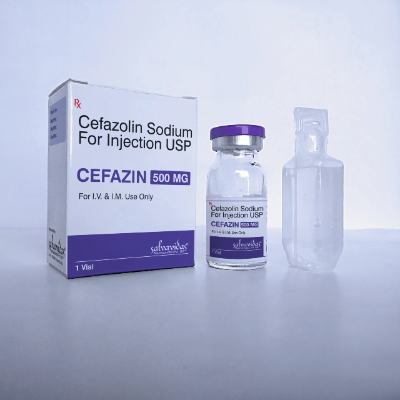


0.5-1 g IV q6-8hr
250-500
mg IV q8hr
1-2 g IV q8hr for 4-7 days
1 g IV q12hr
500 mg IV q12hr
1-1.5 g IV q6hr
Preoperatively: 1-2 g IV/IM 30-60 minutes before procedure
During surgery for lengthy procedures (ie, >2 hr): 0.5-1 g IV
Postoperatively: 0.5-1 g IV q6-8hr for 24 hr
1 g IV/IM 30-60 minutes before procedure
American Heart Association (AHA) guidelines: Endocarditis prophylaxis recommended only for high-risk patients
1 drop instilled into affected eye(s) q1-2hr; typically alternated every other hour with antibiotic providing gram-negative coverage (eg, tobramycin)
Prophylaxis
50 mg/kg IV/IM ≤30-60 minutes before procedure; not to exceed 1 g
AHA guidelines: Endocarditis prophylaxis recommended only for high-risk patients
>3 months and children: 150 mg/kg/day IV/IM divided q8hr (moderate to severe infections, methicillin susceptible S aureus preferred
25-50 mg/kg/day IV divided q6-8hr
May increase to 100 mg/kg/day IV divided q6-8hr
Documented hypersensitivity
Endocarditis prophylaxis recommended only for high-risk patients, per AHA guidelines
Prolonged treatment, hepatic or renal disease, or nutritional deficiency may be associated with increased international normalized ratio (INR)
Use with caution in patients with seizure disorder (high levels are associated with increased risk of seizures); seizures may occur, particularly in patients with renal impairment when dosage is not reduced appropriately; dose must be adjusted in severe renal insufficiency (high doses may cause CNS toxicity); discontinue if seizures occur or make appropriate dosage adjustments in patients with renal impairment; continue anticonvulsant therapy in patients with known seizure disorders
Prescribing cefazolin injection in absence of proven or strongly suspected bacterial infection or a prophylactic indication is unlikely to provide benefit to the patient and increases risk of development of drug-resistant bacteria
As with other antimicrobials, prolonged use of cefazolin injection may result in overgrowth of nonsusceptible microorganisms; repeated evaluation of the patient's condition is essential; should superinfection occur during therapy, appropriate measures should be taken
Therapy may result in a false-positive reaction with glucose in urine when using glucose tests based on Benedict’s copper reduction reaction that determine amount of reducing substances like glucose in urine; it is recommended that glucose tests based on enzymatic glucose oxidase be used
Hypersensitivity reactions, including anaphylaxis, reported with administration of dextrose-containing products; these reactions have been reported in patients receiving high concentrations of dextrose (i.e. 50% dextrose); reactions have been reported when corn-derived dextrose solutions were administered to patients with or without a history of hypersensitivity to corn products
As with other dextrose-containing solutions, cefazolin injection should be prescribed with caution in patients with overt or known subclinical diabetes mellitus or carbohydrate intolerance for any reason
Cefazolin injection may be associated with a fall in prothrombin activity; those at risk include patients with renal or hepatic impairment or poor nutritional state, as well as patients receiving a protracted course of antimicrobial therapy, and patients previously stabilized on anticoagulant therapy; prothrombin time should be monitored in patients at risk and exogenous vitamin K administered as indicated
Available data from published prospective cohort studies, case series and case reports over several decades with cephalosporin use, including cefazolin, in pregnant women have not established a drug-associated risk of major birth defects, miscarriage, or adverse maternal or fetal outcomes; drug crosses the placenta
Data from published literature report that cefazolin is present in human milk, but not expected to accumulate in a breastfed infant; there are no data on effects of drug on breastfed child or on milk production
Developmental and health benefits of breastfeeding should be considered along with mother’s clinical need for therapy and any potential adverse effects on breastfed child from drug or from the mother’s underlying condition
A: Generally acceptable. Controlled studies in pregnant women show no evidence of fetal risk.
B: May be acceptable. Either animal studies show no risk but human studies not available or animal studies showed minor risks and human studies done and showed no risk.C: Use with caution if benefits outweigh risks. Animal studies show risk and human studies not available or neither animal nor human studies done.
D: Use in LIFE-THREATENING emergencies when no safer drug available. Positive evidence of human fetal risk.
X: Do not use in pregnancy. Risks involved outweigh potential benefits. Safer alternatives exist.
Anorexia
Diarrhea
Eosinophilia
Fever
Increased transaminases
Leukopenia
Nausea and vomiting
Neutropenia
Oral candidiasis
Pain at injection site
Phlebitis
Pseudomembranous colitis
Seizure
Stevens-Johnson syndrome
Thrombocytopenia
Thrombocytosis
Transient elevation of hepatic enzymes
Vaginitis